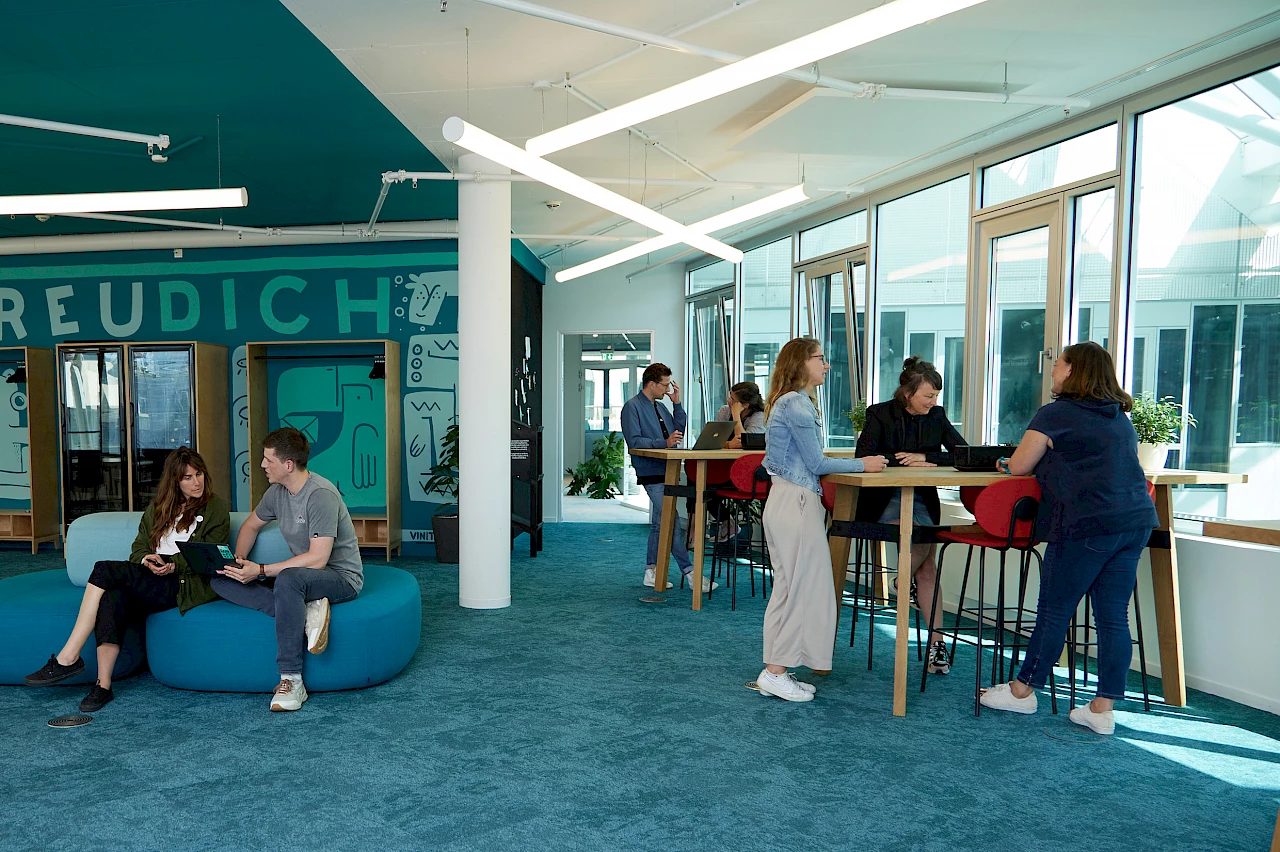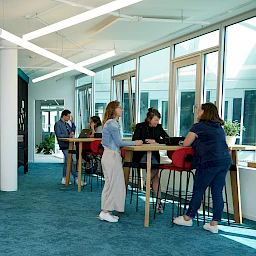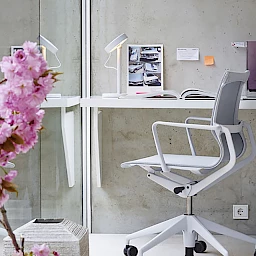Today, working in an office is no longer a matter of course. The Covid-19 pandemic is not the least of the many reasons why more and more companies are offering their employees the option of working from home. The advantages are obvious: more flexibility, huge savings of time and costs and, if all goes well, increased concentration and a better work-life balance. All of these are good arguments for working from home. By contrast, better cooperation and easier communication are reasons to make an office the workplace of choice — if it is properly designed.
In this article we would like to point out the advantages of the office, inspire our readers, and clearly indicate how the strong points of the office can best be used to benefit employees and employers alike.
The advantages of the office — and how you can make the best use of
First of all, it’s safe to say that every individual is different. For example, there are employees who are most productive in an open-plan office and can’t think clearly if they are working at home alone. On the other hand, some colleagues surpass themselves when they’re working from home, because this is the only place where they can concentrate. In the office they constantly feel interrupted by things such as a generally high noise level and the sound of their coworkers talking on the phone.
And of course there are also sectors and functions in which close cooperation with one’s colleagues is more important than in other areas. In other words, the question of whether working from home or working in an office is the better alternative can never be answered in general terms.
The question of whether individual offices, an open-plan office, something between the two, or a mix of various kinds of space is the best option also depends on many factors — for example, the task to be accomplished, the employee’s personality and the company’s requirements.
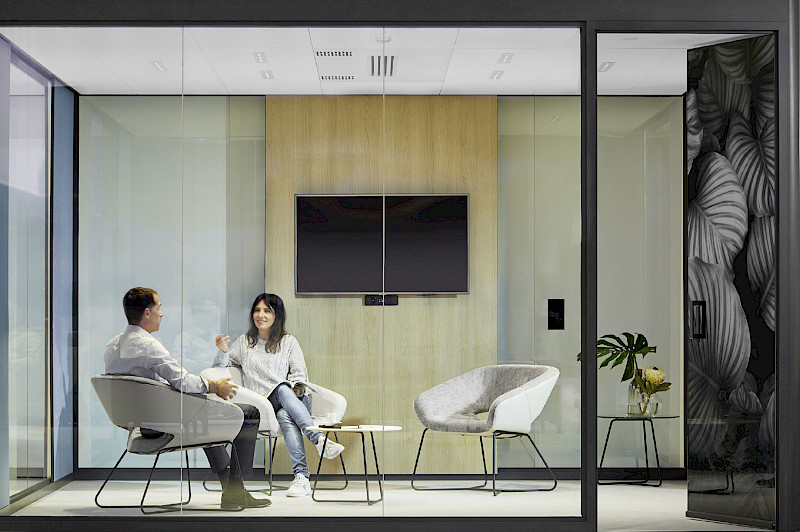
Advantages of the individual office: Concentrated work in a peaceful setting
Individual offices guarantee a peaceful working environment where individuals can easily concentrate on their tasks and can work more effectively in certain situations. Here there are fewer distractions due to coworkers or noise, and the employee’s private space is protected. If individuals also have a permanently assigned workplace in an individual office, they can surround themselves with personal items. This can reinforce a sense of being at home in their own workspace. A further advantage became evident during the Covid-19 pandemic. Individuals who are sitting alone in a room have a lower risk of catching or spreading illnesses.
However, the individual office also has disadvantages. A sense of isolation can develop quickly, and the fact that it’s harder to communicate with colleagues can have a negative effect on one’s work.
An individual office is especially suited for employees who need a great deal of concentration and a clear focus for their work.
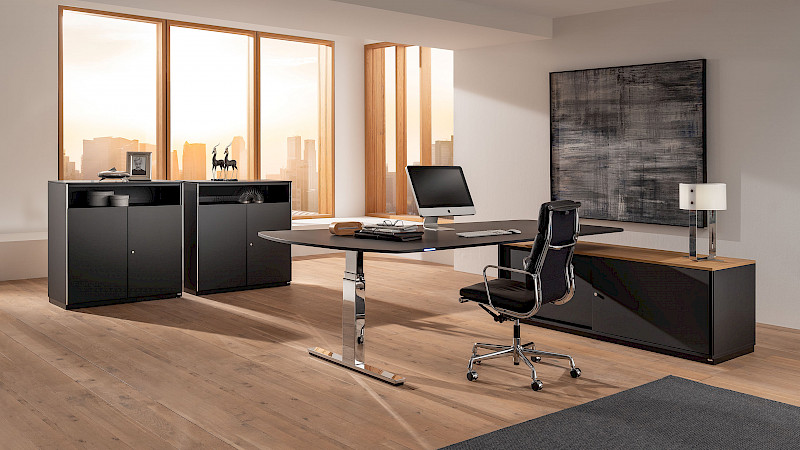
Advantages of the open-plan office: Collaboration and communication
Open-plan offices are, by definition, spaces with an area of at least 400 m². This term is also used colloquially to denote smaller office units. In this article, the term “open-plan office” is used in the latter sense.
An open-plan office offers the opportunity to work in an open environment with direct (visual) contact with one’s colleagues. As a result, it promotes collaboration and communication. Here people can inspire and motivate one another and react quickly to questions and problems. For new employees, the open-plan office offers an opportunity to quickly make social contacts and develop a sense of community and belonging.

Communication between various departments is also facilitated by an open-plan office. In many cases, the establishment of open-plan offices also saves space, and that in turn enables companies to reduce space-related and energy costs.
Frequent disadvantages of open-plan offices are noise and a constant sound level. These can make it difficult to create a concentrated work atmosphere. The lack of a private space can also become a problem, for example because people feel they are constantly being observed and they interpret this as being controlled.
Offices must be adapted to the employees’ needs
Whether people are working in individual or open-plan offices, the same requirements apply. To make sure that employees can fully exploit the advantages of their workplace and enjoy coming to the office, the offices must be appropriately designed and must fulfil the employees’ needs. For example, the work areas must be equipped with ergonomic furniture in order to promote the employees’ health. In open-plan offices, aspects such as noise reduction and respect for individuals’ private space must be taken into account. However, it’s not absolutely necessary for all work tasks to be done in the same place. Multi-spaces and desksharing, with flexible workspaces and technology, can ensure that the daily routine is more varied and make the work easier. You can find practical tips and inspiration related to the design and furnishing of office spaces in the IBA knowledge area.
The role of the office — more than just a workplace
In addition to providing workspaces, the office also serves another important purpose today: it shows how the company operates. As a business card and a showcase for customers, partners and employees, the office must not only offer ideal working conditions but also express what the company represents and how it would like to be perceived. That makes it all the more important to have an interior design that characterizes the office as a place of interaction, creativity and flexibility.
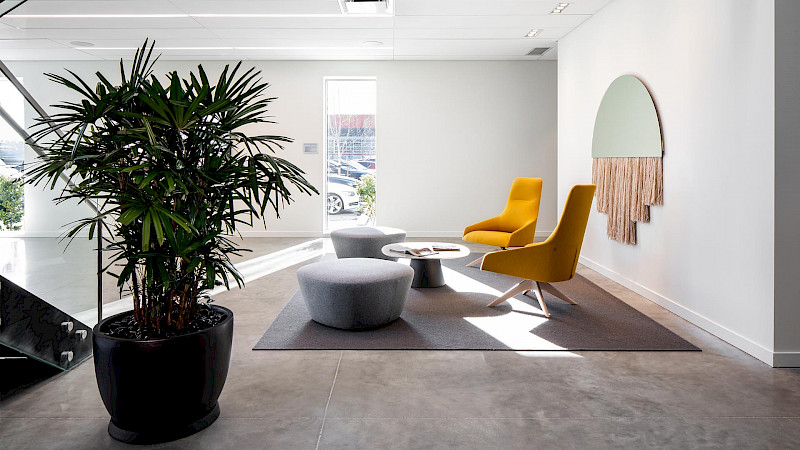
In our showrooms you can see examples of the how various work areas can be realized in the office. Come and be inspired, discover new trends and feel free to use these examples as models for your own office designs.
Working from home or in an office?
Working in an office offers many advantages that are equally significant for employees and companies. Having the right office design is the crucial factor — because that’s the only way companies can make sure their employees are coming to the office as a matter of preference. During times when there is a shortage of skilled workers, companies are facing the challenge of creating a balanced and employee-friendly atmosphere more than ever before. After all, employees ought to consider coming to the office as an enrichment rather than a burdensome duty.
Take a look at our articles, showrooms and videos on this theme and use this opportunity to suitably design your office and optimally exploit the advantages of the office.



